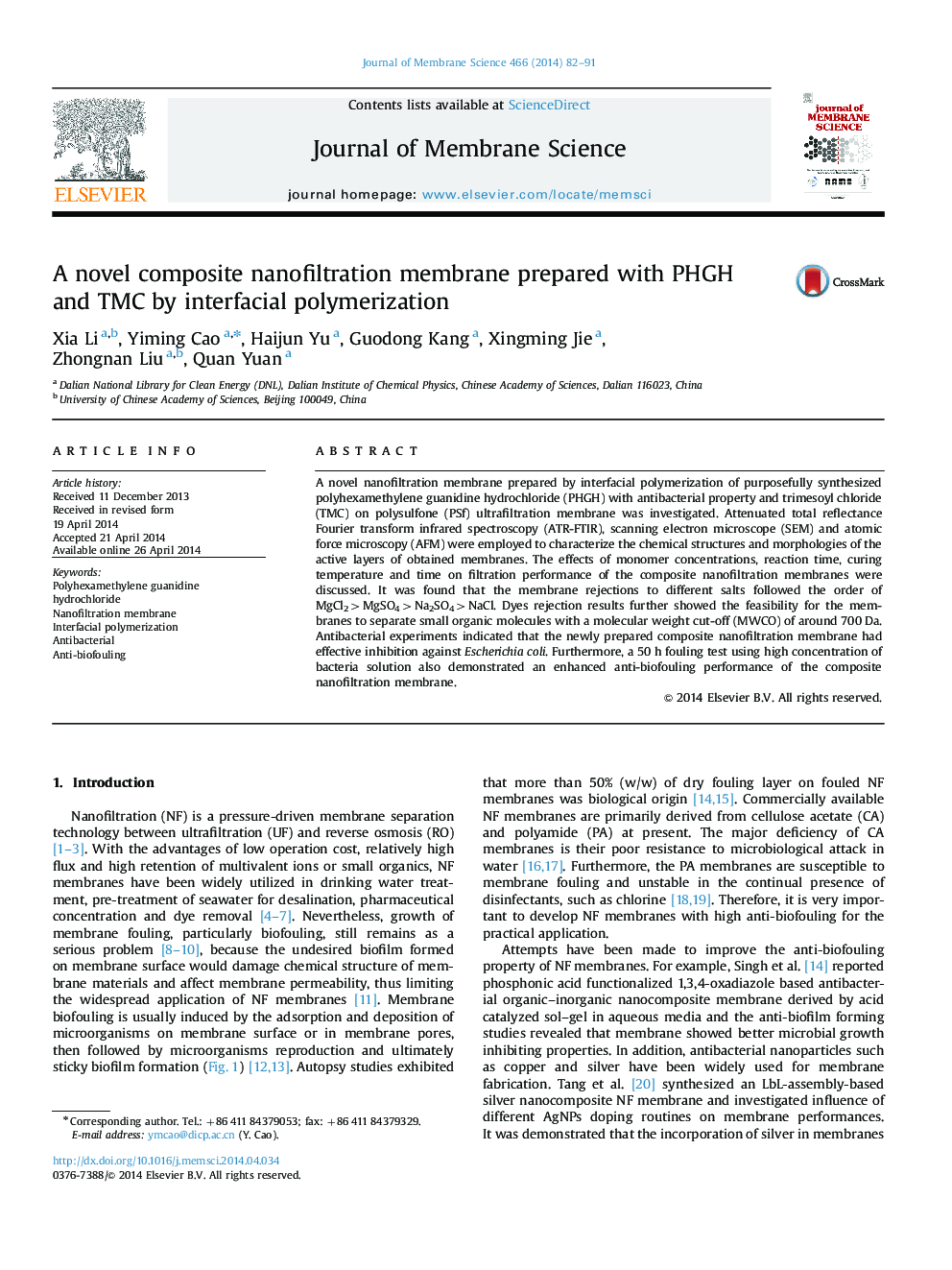| Article ID | Journal | Published Year | Pages | File Type |
|---|---|---|---|---|
| 7022057 | Journal of Membrane Science | 2014 | 10 Pages |
Abstract
A novel nanofiltration membrane prepared by interfacial polymerization of purposefully synthesized polyhexamethylene guanidine hydrochloride (PHGH) with antibacterial property and trimesoyl chloride (TMC) on polysulfone (PSf) ultrafiltration membrane was investigated. Attenuated total reflectance Fourier transform infrared spectroscopy (ATR-FTIR), scanning electron microscope (SEM) and atomic force microscopy (AFM) were employed to characterize the chemical structures and morphologies of the active layers of obtained membranes. The effects of monomer concentrations, reaction time, curing temperature and time on filtration performance of the composite nanofiltration membranes were discussed. It was found that the membrane rejections to different salts followed the order of MgCl2>MgSO4>Na2SO4>NaCl. Dyes rejection results further showed the feasibility for the membranes to separate small organic molecules with a molecular weight cut-off (MWCO) of around 700Â Da. Antibacterial experiments indicated that the newly prepared composite nanofiltration membrane had effective inhibition against Escherichia coli. Furthermore, a 50Â h fouling test using high concentration of bacteria solution also demonstrated an enhanced anti-biofouling performance of the composite nanofiltration membrane.
Keywords
Related Topics
Physical Sciences and Engineering
Chemical Engineering
Filtration and Separation
Authors
Xia Li, Yiming Cao, Haijun Yu, Guodong Kang, Xingming Jie, Zhongnan Liu, Quan Yuan,
